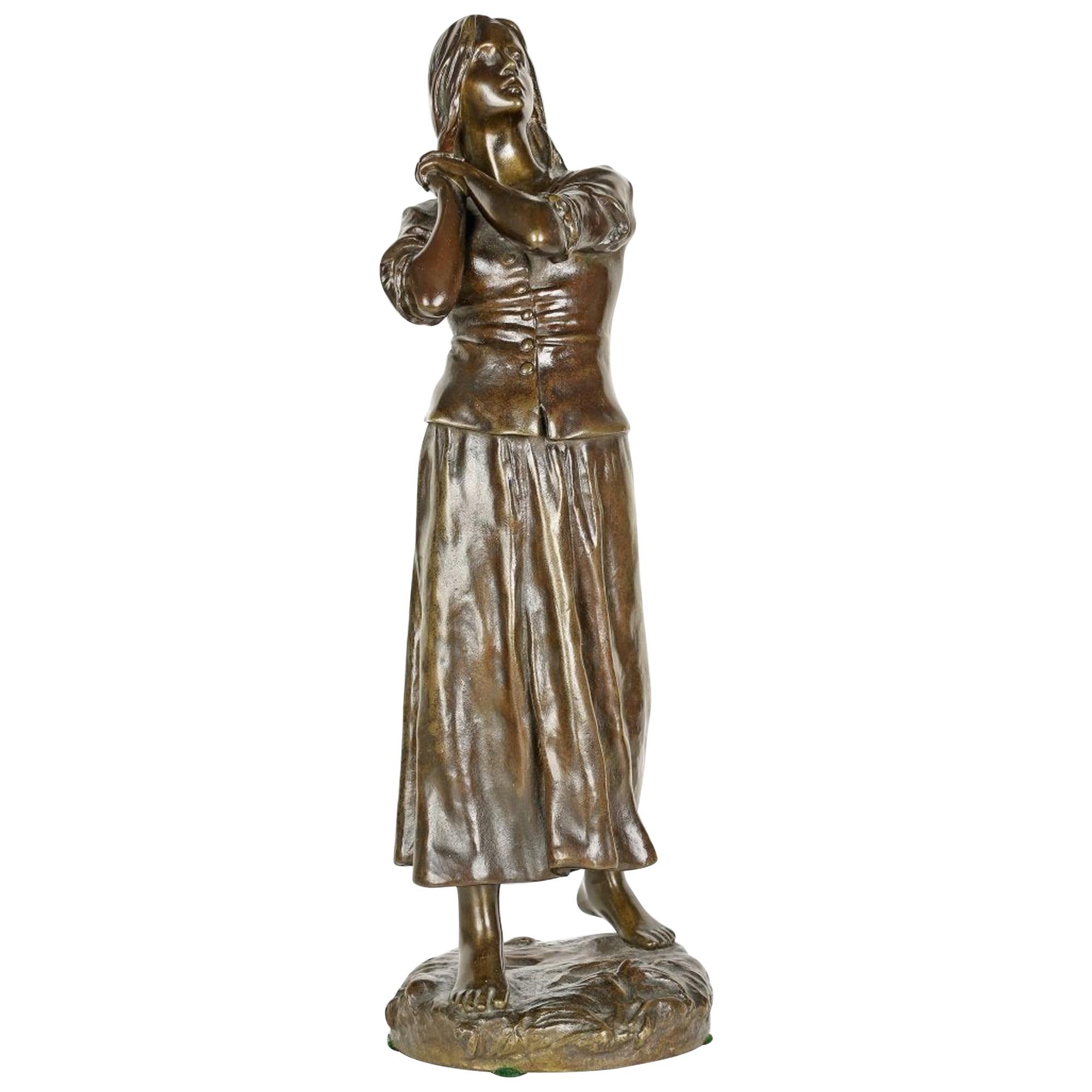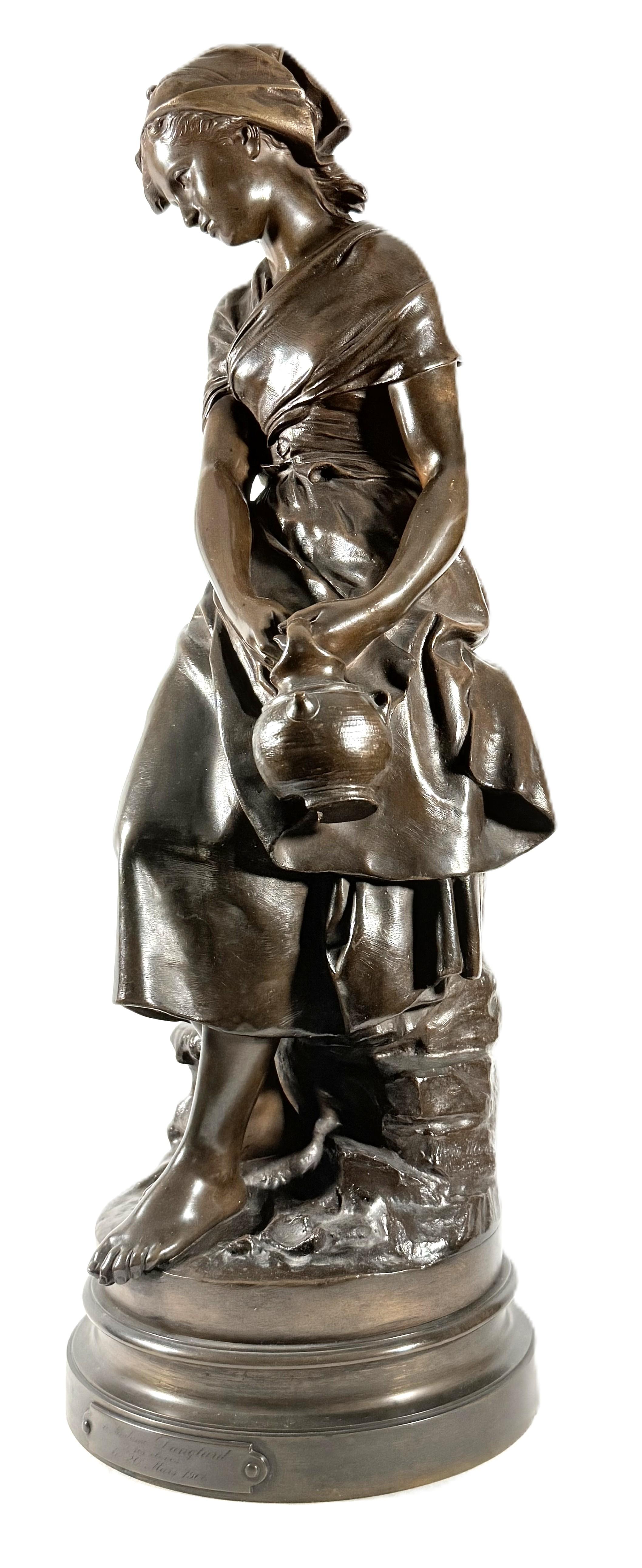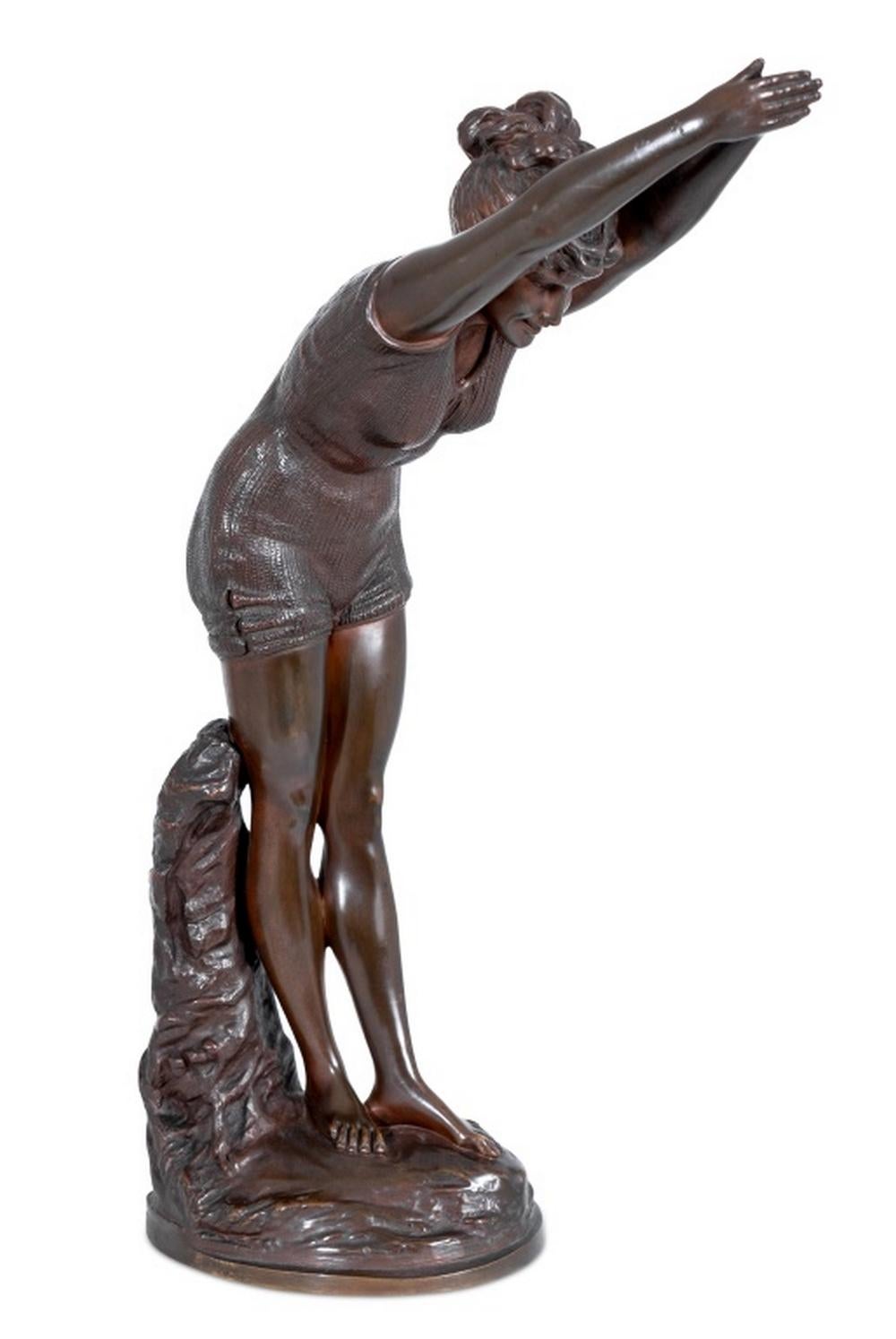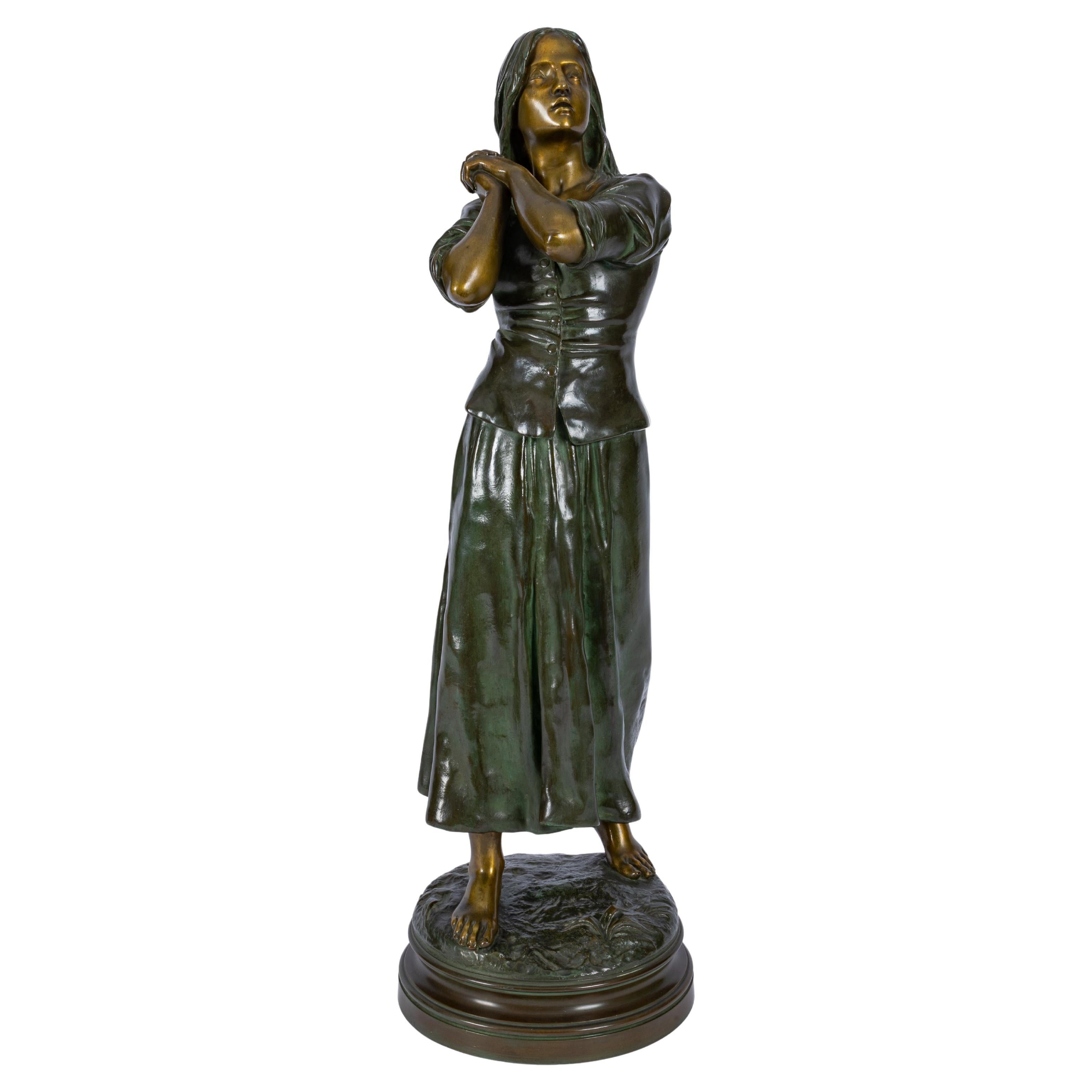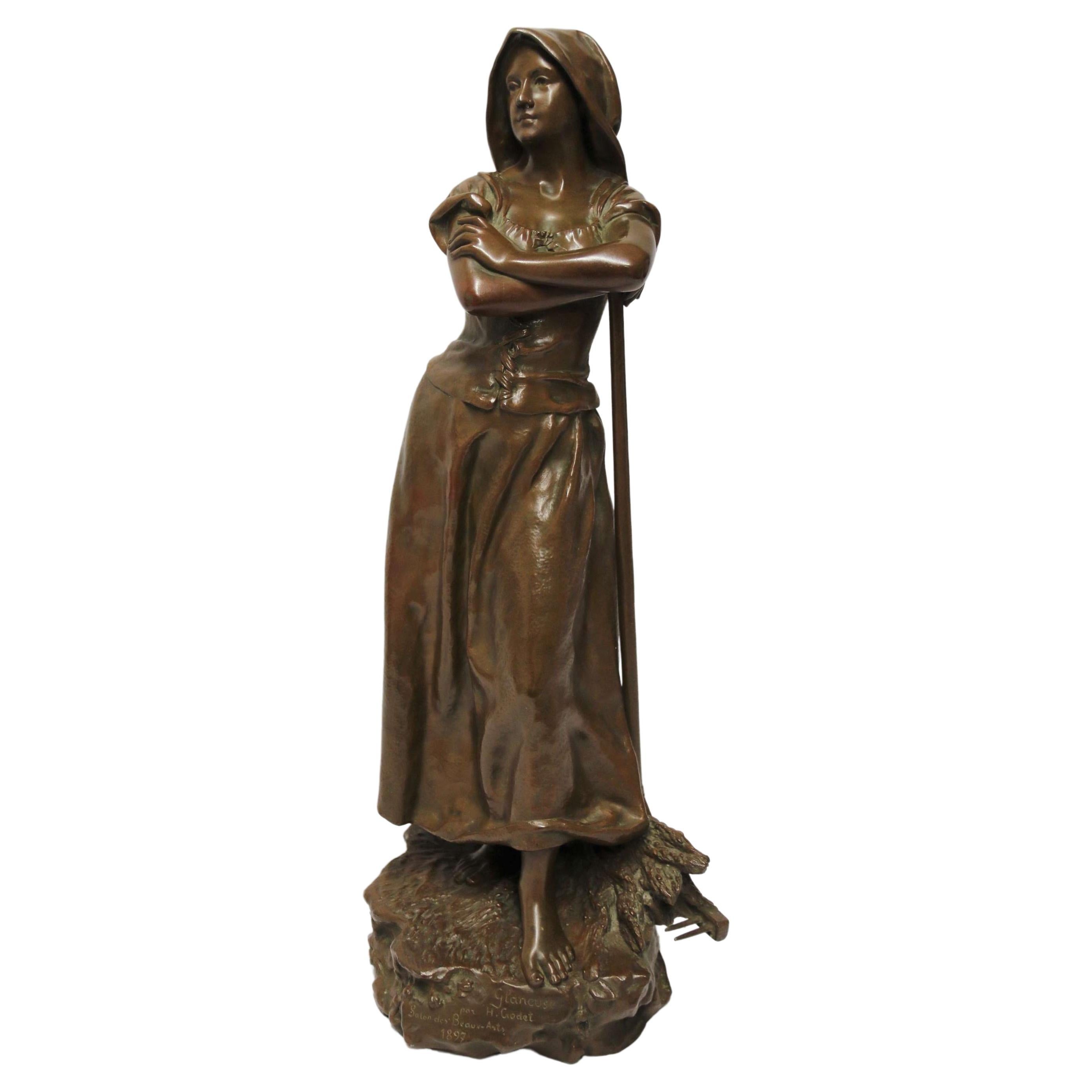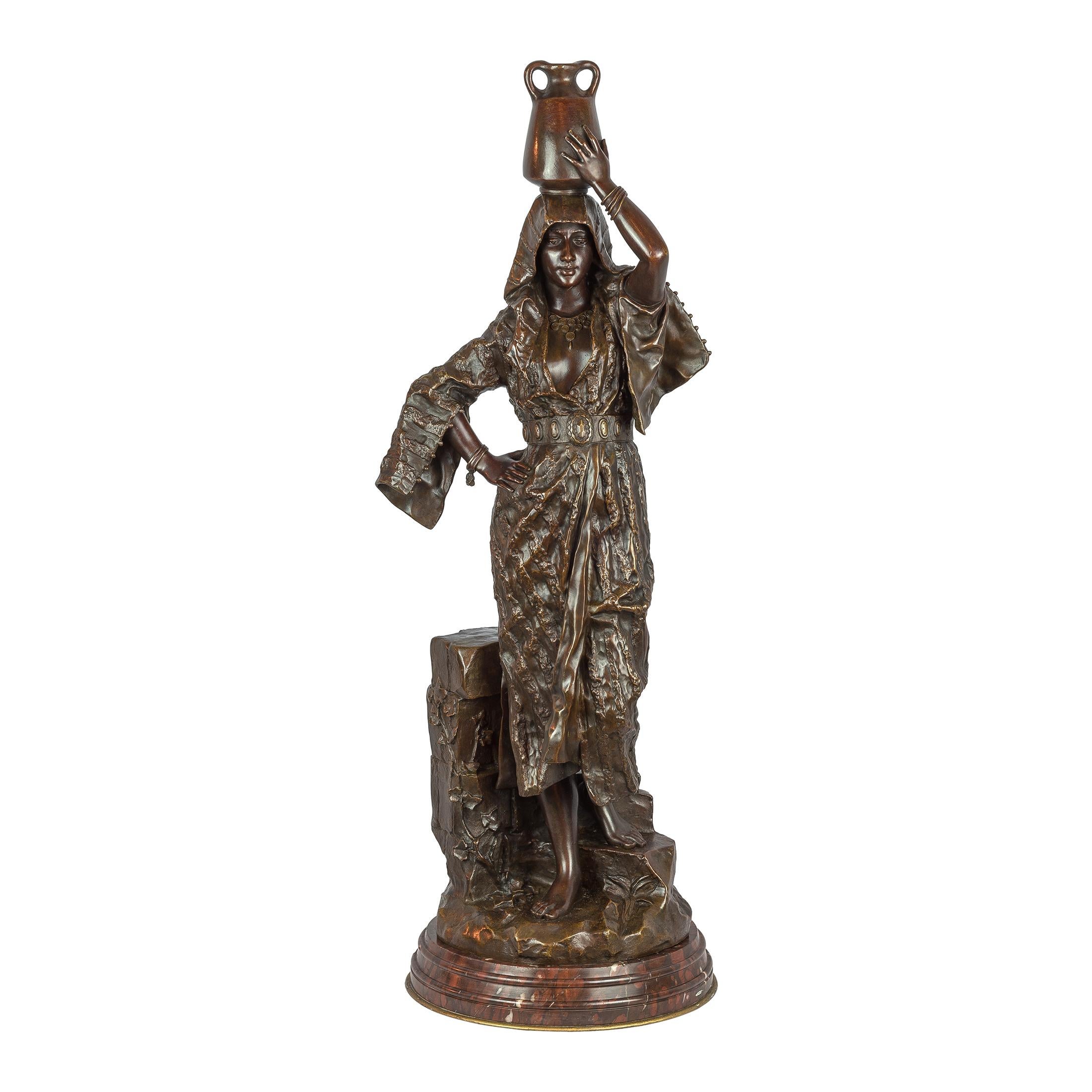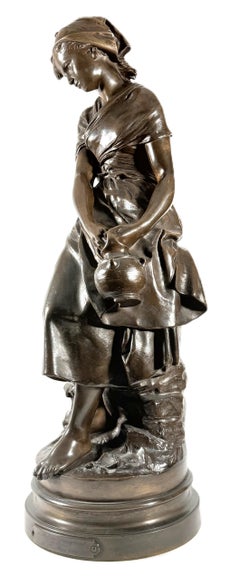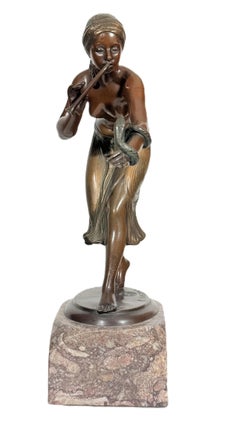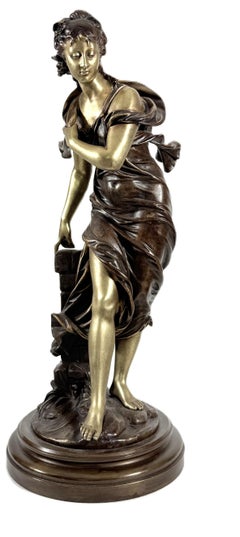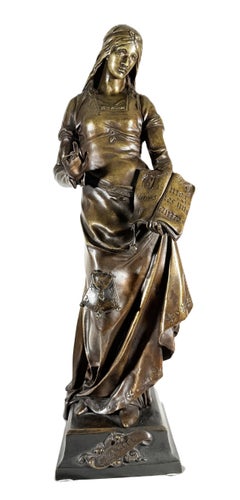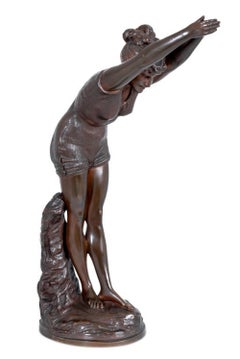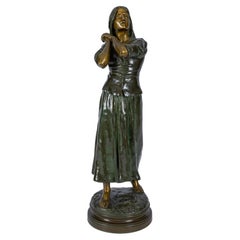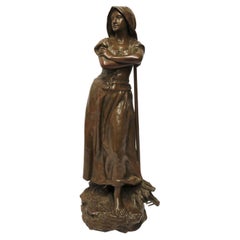Items Similar to Raoul Fançois Larche Patinated bronze figure of a woman
Video Loading
Want more images or videos?
Request additional images or videos from the seller
1 of 17
Raoul Fançois LarcheRaoul Fançois Larche Patinated bronze figure of a woman1900
1900
$3,837.37
£2,854.62
€3,200
CA$5,254.68
A$5,842.48
CHF 3,050.62
MX$71,117.26
NOK 38,924.62
SEK 36,470.51
DKK 24,359.83
Shipping
Retrieving quote...The 1stDibs Promise:
Authenticity Guarantee,
Money-Back Guarantee,
24-Hour Cancellation
About the Item
FRANCOIS-RAOUL LARCHE 1860 SAINT-ANDRÉ-DE-CUBZAC - 1912 PARIS
Signed on the base with "RAOUL LARCHE," foundry mark "SIOT DECAUVILLE PARIS FONDEUR," and number "R 276."
Total height: 43 cm
Sculpture made of patinated and gilded bronze.
François-Raoul Larche was born in 1860 in Saint-André-de-Cubzac in the Nouvelle-Aquitaine region.
His artistic talent and interest were likely inherited from his father, the woodcarver and cabinetmaker Guillaume Larche.
He studied at the "École Nationale Supérieure des Arts Décoratifs" and the "École Nationale Supérieure des Beaux-Arts" in Paris and made his debut with his works at the Paris Salon in 1884.
- Creator:Raoul Fançois Larche (1860 - 1912, French)
- Creation Year:1900
- Dimensions:Height: 16.93 in (43 cm)Width: 4.34 in (11 cm)Depth: 4.34 in (11 cm)
- Medium:
- Movement & Style:
- Period:
- Condition:Wear and tear commensurate with age and use.
- Gallery Location:Berlin, DE
- Reference Number:1stDibs: LU2877216471902
About the Seller
New to 1stDibs
Joined in the past six months.
No Reviews Yet
Vetted Professional Seller
Every seller passes strict standards for authenticity and reliability
Established in 1990
1stDibs seller since 2025
- ShippingRetrieving quote...Shipping from: Berlin, Germany
- Return Policy
Authenticity Guarantee
In the unlikely event there’s an issue with an item’s authenticity, contact us within 1 year for a full refund. DetailsMoney-Back Guarantee
If your item is not as described, is damaged in transit, or does not arrive, contact us within 7 days for a full refund. Details24-Hour Cancellation
You have a 24-hour grace period in which to reconsider your purchase, with no questions asked.Vetted Professional Sellers
Our world-class sellers must adhere to strict standards for service and quality, maintaining the integrity of our listings.Price-Match Guarantee
If you find that a seller listed the same item for a lower price elsewhere, we’ll match it.Trusted Global Delivery
Our best-in-class carrier network provides specialized shipping options worldwide, including custom delivery.More From This Seller
View AllBeautiful late 19th-century bronze sculpture by Mathurin Moreau
By Mathurin Moreau
Located in Berlin, DE
Beautiful late 19th-century bronze sculpture by Mathurin Moreau
"YOUNG WOMAN ON A ROCK" BY MATHURIN MOREAU (1822-1912)
Young girl with a broken jug,
Bronze circa 1880/1890, France
...
Category
Late 19th Century Jugendstil Figurative Sculptures
Materials
Bronze
Rudolf KAESBACH (1873-1955) Bronze Jugendstil
By Rudolf Kaesbach
Located in Berlin, DE
Rudolf KAESBACH (1873-1955), "Snake Charmer"
Inscribed 'R. Kaesbach' on the plinth and with the foundry mark, height with base: approx. 30.2 cm
Founding mark RM
Rosenthal & Maeder ...
Category
Early 20th Century Figurative Sculptures
Materials
Bronze
French antique bronze sculpture by Eutrope Bouret
By Eutrope Bouret
Located in Berlin, DE
This is an outstanding bronze statue of Eutrope Bouret, signed on the base, by the very well-known French artist Eutrope Bouret (1833-1906).
French antique bronze sculpture by Eutro...
Category
19th Century Art Nouveau Figurative Sculptures
Materials
Bronze
Französische Bronze Emile Louis Picault „Charity-Bien Faisance“
By Émile Louis Picault
Located in Berlin, DE
Bronze Emile Louis Picault
"Charity-Bien Faisance," a French bronze figure by Emile Louis Picault.
50 cm
Bronze signed Emile Louis Picault. With cast stamp.
Wonderful work with a ...
Category
1890s Jugendstil Figurative Sculptures
Materials
Bronze
Eutrope Bouret (1833-1906) Psyché
By Eutrope Bouret
Located in Berlin, DE
Eutrope Bouret Bronze
Spyche
Eutrope Bouret (French, 1833-1906)
Late 19th century.
Signed on the base
Bouret (French, 1833–1906) was an important 19...
Category
19th Century Jugendstil Figurative Sculptures
Materials
Bronze
Eugène Laurent (1832-1898), The Beachcomber
Located in Berlin, DE
Eugène Laurent (1832-1898),
The Beachcomber
Inscribed "E. Laurent" on the base plate in the cast.
H 63 cm
Eugène Laurent studied at the École des Beaux-Arts in Paris and was awa...
Category
Early 19th Century Jugendstil Figurative Sculptures
Materials
Bronze
You May Also Like
Raoul Fançois Larche Patinated Bronze Figure of a woman
By François-Raoul Larche
Located in West Palm Beach, FL
Raoul François Larche (1860-1912)
A lovely patinated bronze figure of a young woman standing barefooted on a circular mounted base and gazing up...
Category
20th Century Figurative Sculptures
Materials
Bronze
Odoardo Tabacchi "La Taffolina" Patinated Bronze
Located in Astoria, NY
Odoardo Tabacchi (Italian, 1832-1905) "La Taffolina" Patinated Bronze Sculpture, late 19th century, depicting a female diver on an oval base, signed "O. Tabacchi Torino". 15" H x 10"...
Category
Late 19th Century Art Nouveau Figurative Sculptures
Materials
Bronze
Raoul Larche: bronze sculpture of Jeanne d'Arc
By François-Raoul Larche
Located in Zemst, BE
Impressive bronze sculpture by french artist François-Raoul Larche (1860-1912).
Representing Jeanne d'Arc
Dated: +/- 1900
High quality bronze finished a in double colour patina.
...
Category
Early 20th Century French Neoclassical Figurative Sculptures
Materials
Bronze
19th Century Bronze Sculpture of a Young Female Gathering Hey
By Henri Godet
Located in Central England, GB
19th Century Bronze Sculpture of a Young Female Gathering Hey
This superb 19th century large bronze figure was produced at the highly acclaimed French fo...
Category
Antique 19th Century Louis Philippe Figurative Sculptures
Materials
Bronze
A Fine Gaston Vuvenot Leroux Patinated Bronze of Rebecca
Located in New York, NY
GASTON VUVENOT LEROUX
French, (1854-1942)
Rebecca
Signed ‘G. LEROUX’ on base; inscribed "REBECCA".
31 x 10 1/2 inches
Notes:
A fine quality patinated bronze of...
Category
Late 19th Century Figurative Sculptures
Materials
Bronze
Maurice Bouval (French 1863 - 1916), Patinated Bronze Of An Art Nouveau Woman
By Maurice Bouval
Located in Germantown, MD
Maurice Bouval (French 1863 - 1916), Patinated Bronze Figure Of An Art Nouveau Woman Bronze on Marble Plinth.
Category
Antique Late 19th Century French Art Nouveau Figurative Sculptures
Materials
Bronze
More Ways To Browse
Bronze Woman
Antique Bronze Marks
Salon Des Beaux Arts Bronze
Antique Foundry Marks
Antique Bronze Foundry Marks
Guillaume Bronze
Bronze Jugendstil
Francois Guillaume
Brooklyn Bridge Warhol
Carlos Barrios
Cherry Pond
Circus Carving
Coronel Rafael
Dallas Prince
Devon Railway
Emil Ceramic
Etchings Lake George
German Olympic Poster 1936
